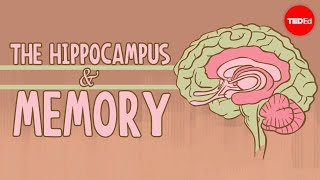(单词翻译:单击)
On September 1st, 1953, William Scoville used a hand crank and a cheap drill saw to bore into a young man's skull,
在1953年9月1日,威廉·斯科维尔使用一个起动手柄和一个廉价电钻,在一个年轻男子的头骨上钻孔,
cutting away vital pieces of his brain and sucking them out through a metal tube.
切除了他脑部的重要部分,并且用金属管子把它们吸走。
But this wasn't a scene from a horror film or a gruesome police report.
但是这并不是恐怖电影场景或者一个可怕的警察报告。
Dr. Scoville was one of the most renowned neurosurgeons of his time,
斯科维尔医生是那时候最有名的神经外科医生之一,
and the young man was Henry Molaison, the famous patient known as 'H.M.',
这位年轻男子是亨利·莫莱森,被熟知为“H.M.”的有名病人,
whose case provided amazing insights into how our brains work.
他的病例为我们了解大脑如何运作提供了神奇的认识。
As a boy, Henry had cracked his skull in an accident
儿时,亨利在一次意外中撞裂了他的头骨,
and soon began having seizures, blacking out and losing control of bodily functions.
很快他开始癫痫发作、昏迷并丧失控制身体的能力。
After enduring years of frequent episodes, and even dropping out of high school,
在常年出现这种经常偶发性发作,甚至高中退学后,
the desperate young man had turned to Dr. Scoville, a daredevil known for risky surgeries.
这个绝望的年轻人找到了斯科维尔医生,一个因冒险手术而闻名的敢干的人。
Partial lobotomies had been used for decades to treat mental patients
部分前脑叶白质切除术常年用于治疗精神患者,
based on the notion that mental functions were strictly localized to corresponding brain areas.
理论基础是大脑功能是严格局部化于相应大脑区域的。
Having successfully used them to reduce seizures in psychotics,
曾成功使用它们减少精神病患者发作,
Scoville decided to remove H.M.'s hippocampus,
斯科维尔决定移除H.M.的海马组织,
a part of the limbic system that was associated with emotion but whose function was unknown.
它是人脑边缘系统的一部分,与情感相关,但是具体功能仍然不清楚。
At first glance, the operation had succeeded.
刚开始,手术成功了。
H.M.'s seizures virtually disappeared, with no change in personality, and his IQ even improved.
H.M.的病情发作几乎消失了,个人性格没有改变,而且他的智力甚至提高了。
But there was one problem: His memory was shot.
但是很快出现了一个问题:他的记忆被打乱了。
Besides losing most of his memories from the previous decade, H.M. was unable to form new ones,
除了失去他早年的大部分记忆,H.M.不能形成新的记忆,
forgetting what day it was, repeating comments, and even eating multiple meals in a row.
他会忘记日期,重复说话,甚至连续吃很多顿饭。
When Scoville informed another expert, Wilder Penfield, of the results,
当斯科维尔通知其他专家结果,
he sent a Ph.D student named Brenda Milner to study H.M. at his parents' home,
韦尔德·潘菲尔德派了他的博士学生布伦达·米尔纳,在亨利父母家研究H.M.的情况
where he now spent his days doing odd chores, and watching classic movies for the first time, over and over.
H.M.现在整天做奇怪的事,重复看经典电影。
What she discovered through a series of tests and interviews didn't just contribute greatly to the study of memory.
她发现通过一系列的测试和访谈不仅对记忆研究产生巨大贡献。
It redefined what memory even meant.
它还重新定义了记忆的内涵。
One of Milner's findings shed light on the obvious fact that although H.M. couldn't form new memories,
米尔纳的其中一个发现揭露了明显的事实,虽然H.M.不能够形成新的记忆,
he still retained information long enough from moment to moment to finish a sentence or find the bathroom.
他仍然保留信息足够长时间来完成一个句子,或者找到浴室。

When Milner gave him a random number,
当米尔纳给他一个随机数字,
he managed to remember it for fifteen minutes by repeating it to himself constantly.
他通过经常重复这个数字,用15分钟记住了它。
But only five minutes later, he forgot the test had even taken place.
但是仅仅五分钟后,他就忘记这个测试曾经发生过。
Neuroscientists had though of memory as monolithic, all of it essentially the same and stored throughout the brain.
神经科学家曾认为记忆是整体的,所有的这些都是一样的,而且保存在整个大脑中。
Milner's results were not only the first clue for the now familiar distinction between short-term and long-term memory,
米尔纳的研究结果并不是如今短期和长期记忆之间区别的第一线索,
but show that each uses different brain regions.
但显示它们储存于不同脑区域。
We now know that memory formation involves several steps.
如今我们知道记忆的形成有几个步骤。
After immediate sensory data is temporarily transcribed by neurons in the cortex, it travels to the hippocampus,
感觉信息暂时在大脑皮质神经元转录后转至海马组织
where special proteins work to strengthen the cortical synaptic connections.
那里有特殊蛋白质加强皮质突触连接。
If the experience was strong enough, or we recall it periodically in the first few days,
如果是够强烈的经历,或在经历后几天间断回忆,
the hippocampus then transfers the memory back to the cortex for permanent storage.
海马组织则将记忆转回皮质做长期储存。
H.M.'s mind could form the initial impressions,
H.M.的大脑里能形成初步印象,
but without a hippocampus to perform this memory consolidation, they eroded, like messages scrawled in sand.
但没海马组织执行记忆内存,记忆受侵蚀,犹如写在沙上的信息。
But this was not the only memory distinction Milner found.
但米尔纳发现记忆区别不只如此。
In a now famous experiment, she asked H.M. to trace a third star in the narrow space between the outlines of two concentric ones
在一个现在很著名的实验中,她请H.M.在两个同心的星星轮廓之间的狭小空间中,看着镜子描绘出第三个星星,
while he could only see his paper and pencil through a mirror.
但他只可以通过镜子看到他的纸和笔。
Like anyone else performing such an awkward task for the first time, he did horribly.
就如其他人首次做这么有难度的任务一样,他做得很糟。
But surprisingly, he improved over repeated trials,
但出乎意料的是,在反复试验后,他进步了。
even though he had no memory of previous attempts.
虽然他并无先前尝试的记忆。
His unconscious motor centers remembered what the conscious mind had forgotten.
他的无意识运动中心记得被有意识神志遗忘的的信息。
What Milner had discovered was that the declarative memory of names, dates and facts
米尔纳所发现的是姓名、日期、事实等陈述性记忆,
is different from the procedural memory of riding a bicycle or signing your name.
有别于如何骑脚踏车、签名等的程序性记忆。
And we now know that procedural memory relies more on the basal ganglia and cerebellum, structures that were intact in H.M.'s brain.
现今我们知道程序性记忆大都依赖基底核与小脑,这些结构在H.M.脑中是完整的。
This distinction between 'knowing that' and 'knowing how' has underpinned all memory research since.
从此以后,“知道”和“知道如何”的区别成为记忆研究的根本。
H.M. died at the age of 82 after a mostly peaceful life in a nursing home.
H.M.的人生大都平静的在养老院度过,去世时82岁。
Over the years, he had been examined by more than 100 neuroscientists,
多年来,他被超过100名神经学家研究过,
making his the most studied mind in history.
是历史上被研究次数最多的大脑。
Upon his death, his brain was preserved and scanned
当他死亡的时候,他的大脑被保存和扫描,
before being cut into over 2000 individual slices and photographed to form a digital map down to the level of individual neurons,
然后被切成多于2000块独立的切片,并且被拍摄下来生成一个细致到神经元个体级别的电子图,
all in a live broadcast watched by 400,000 people.
过程全部现场直播并且有40万的人观看。
Though H.M. spent most of his life forgetting things,
虽然H.M.的一生几乎是在遗忘中度过,
he and his contributions to our understanding of memory will be remembered for generations to come.
但他和他对人类了解记忆的贡献会被每一代人永记。


